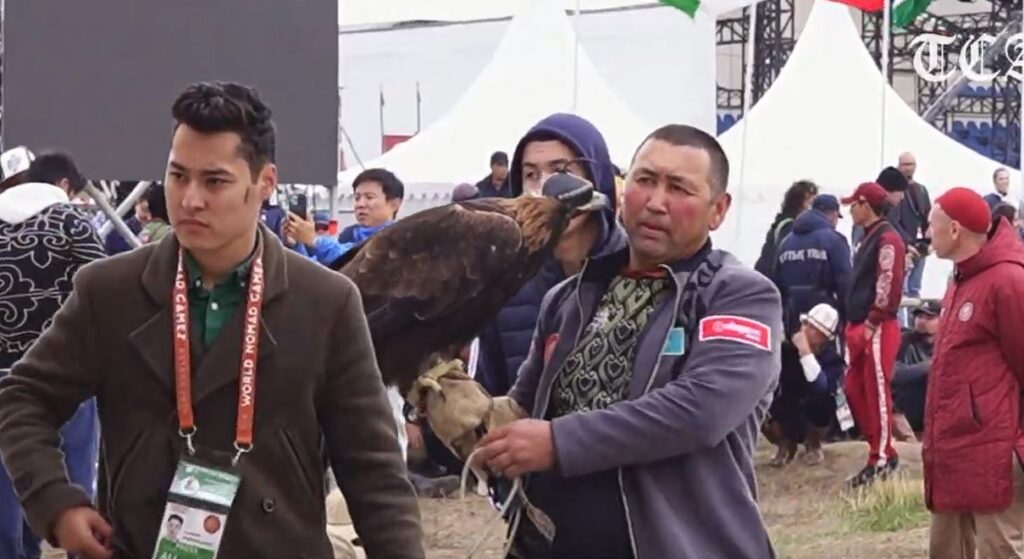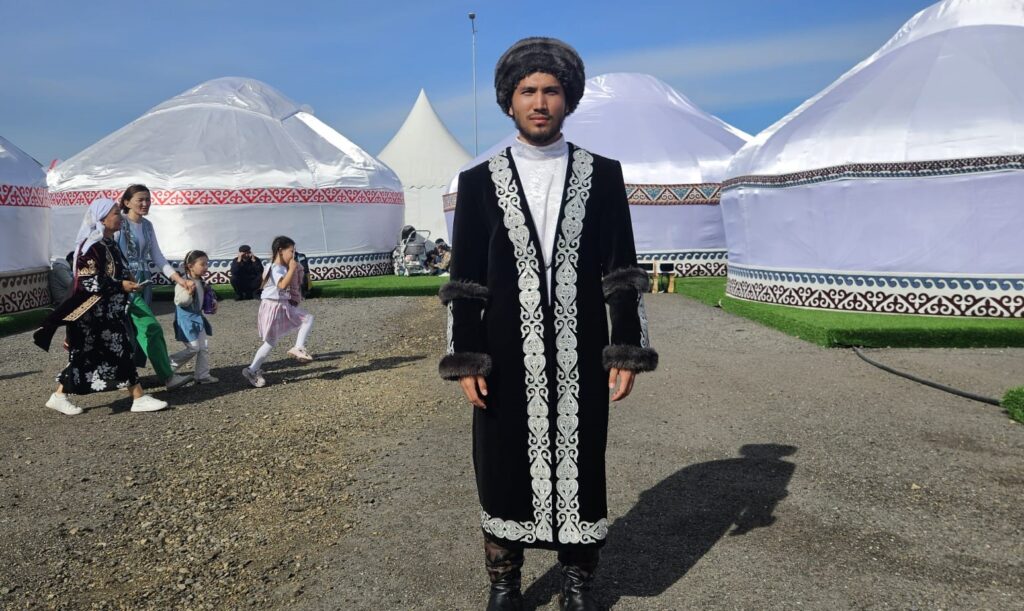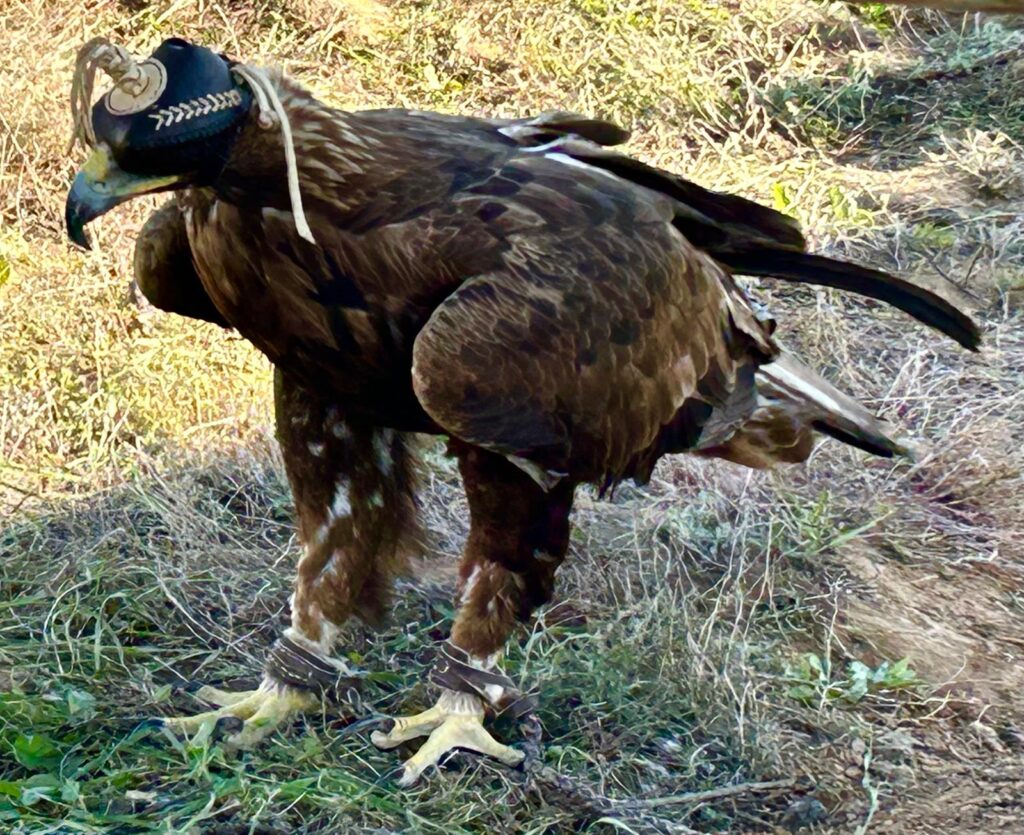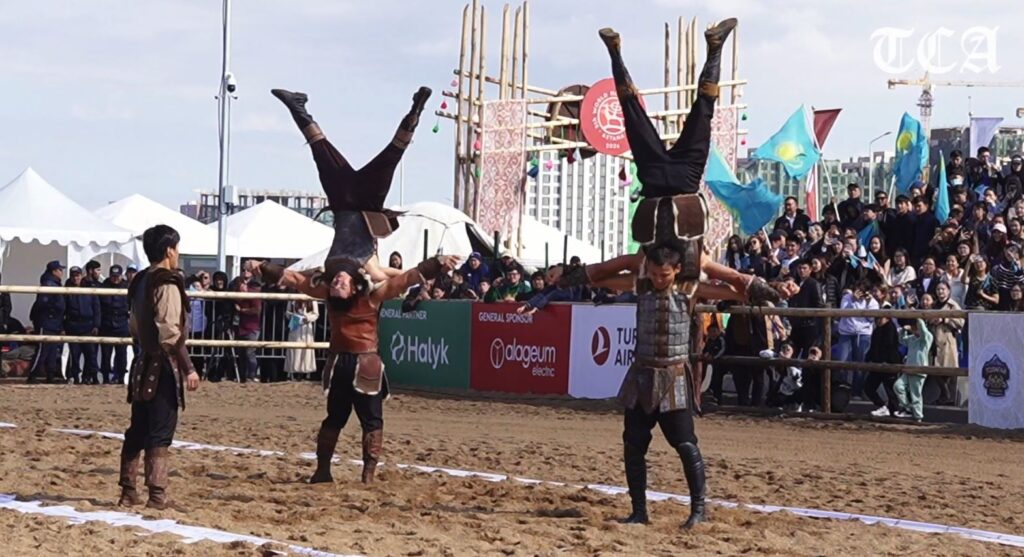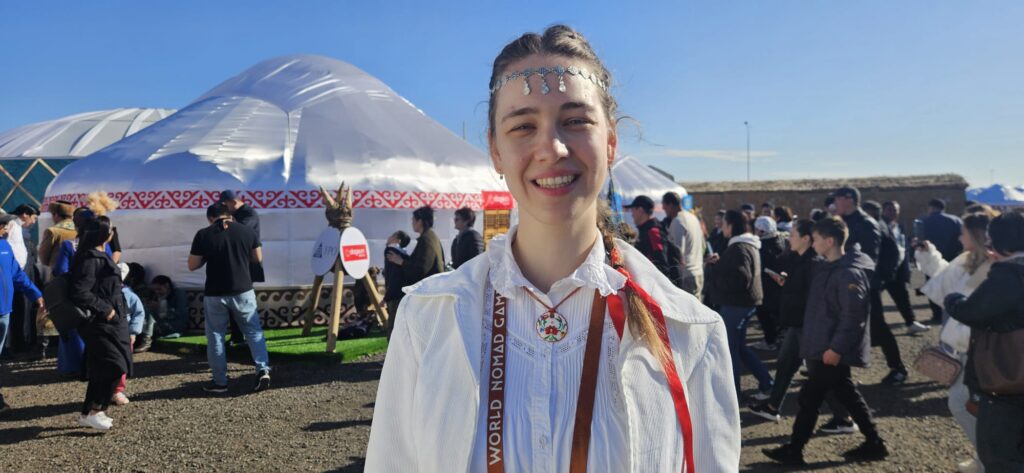Nestled among the yurts of the 2024 World Nomad Games Ethnoaul (Ethnic Village), one yurt in particular provided a promotional VIP space for the distinguished Russophone poet, politician, UNESCO ambassador, International Democratic Party Chairman of the People’s Congress of Kazakhstan, and anti-nuclear activist Olzhas Suleimenov. A hushed silence spread inside the circumference of the AZ i YA (a Russian play on the word “Asia”) yurt, named in honor of Suleimenov’s 1975 book about the conceivable Turkic origin of the epic Old East Slavic poem The Tale of Igor’s Campaign. Bystanders were ushered out when the Almaty-born Suleimenov arrived. The aforementioned book caused controversy when it was released in the Soviet era and was almost banned when Suleimenov was accused of “national chauvinism” and “glorifying feudal nomadic culture.” By contrast, the purpose of the AZ i YA yurt is to educate the unenlightened and celebrate the thirteen elements of “Kazakhstan’s Rich Cultural Heritage.”
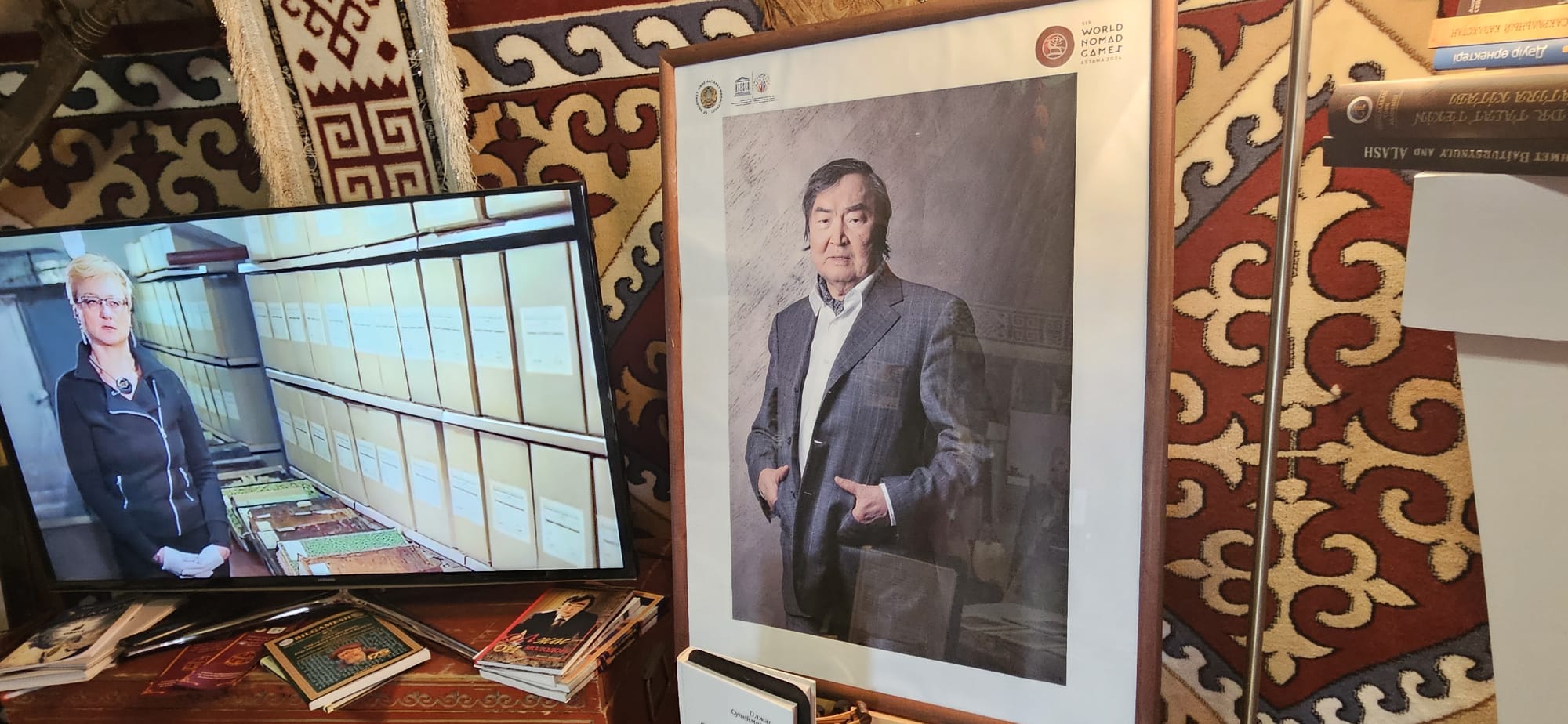
Those thirteen elements, as explained by the yurt’s translator and self-proclaimed “young scientist” Dana Tursynova, include Aitysh, a spoken word poetry contest with dueling dombra (two-string instrument), or the Kyrgyz komuz (two or three strings), in which two protagonists improvise on the topics of opposing ideas, retorts, and general frustrations. Tursynova described it as “conveying political problems” and “the sound of a nation [aimed at] the government.” At a neighboring yurt, Aitysh—delivered with gravelly belligerence—was audibly comparable with a modern battle rap. Another element is Nasreddin Hodja, a 13th-century folklore storyteller who—similar to the Aitysh tradition—used humor to air political grievances and other types of narrative.
A further element is Korkyt-Ata (translated from Kazakh as “granddad”), a 9th-century philosopher, who, in his pursuit of immortality discovered that death was always waiting for him. As he gained enlightenment, he somehow had enough free time to craft the kobyz, an ancient Turkic stringed instrument. Thus, he is known as the founder of Kazakh string and bow instruments. The yurt, the round portable homes of the nomads, is an element, as is orteke, where the dombra musician surpasses the average one-man-band status by operating moving wooden puppets connected to his fingers via the strings to convey multi-task theater.
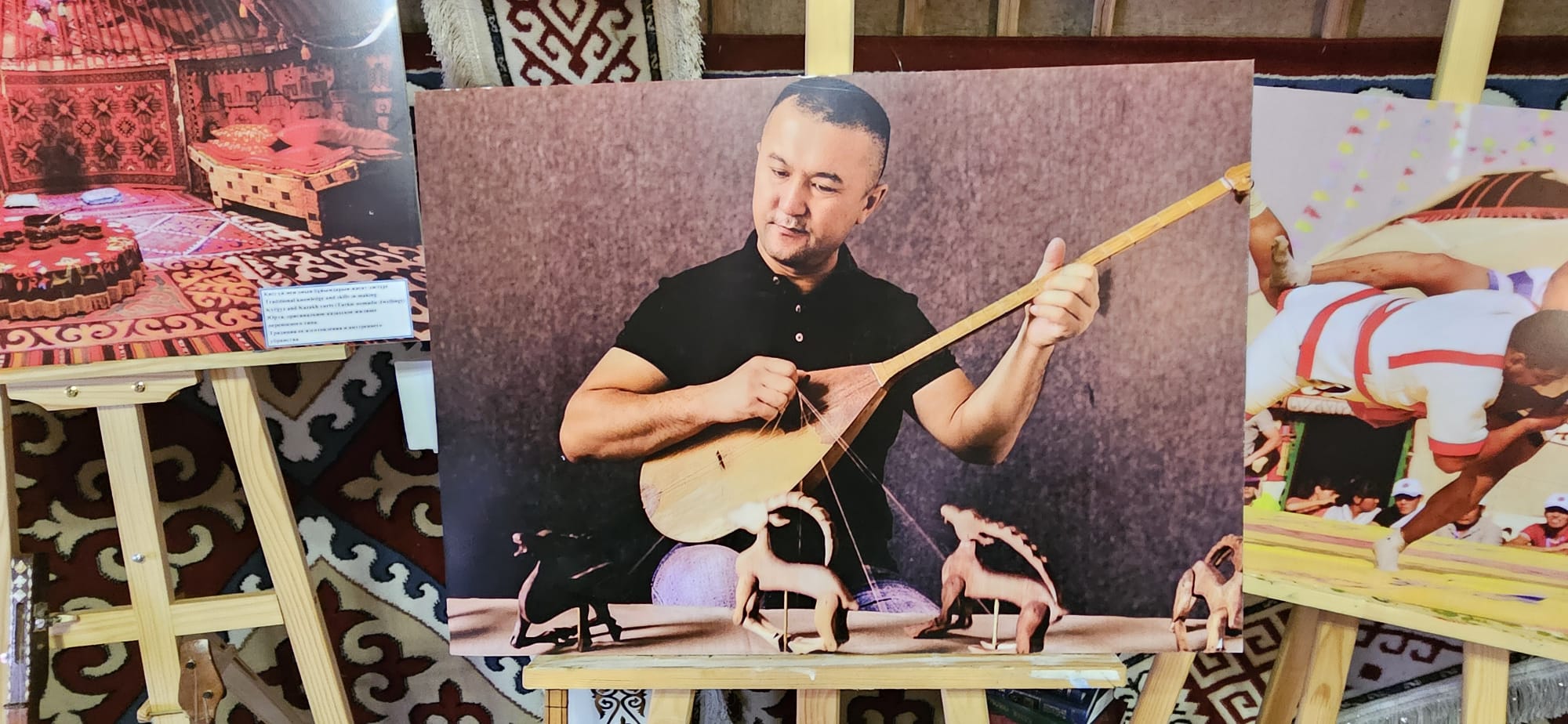
The sports elements comprise kazakhsha kures, traditional Kazakh wrestling, which in recent times has traded the long-established grass turf for a mod con carpet, board-type games, such as Assyk, designed to sharpen the intellectual and physical development of children, and Kusbegilik, or hunting with birds of prey, a Kazakh cultural heritage as well as a major sport in the WNG. Edible elements combine katyrma flatbread, an important part of Kazakhstan’s communal relations in the interchange of goodwill (e.g. “have a good life”) when sharing the bread, and horse breeder festivities, where kumis, fermented horse milk, is the culinary highlight.

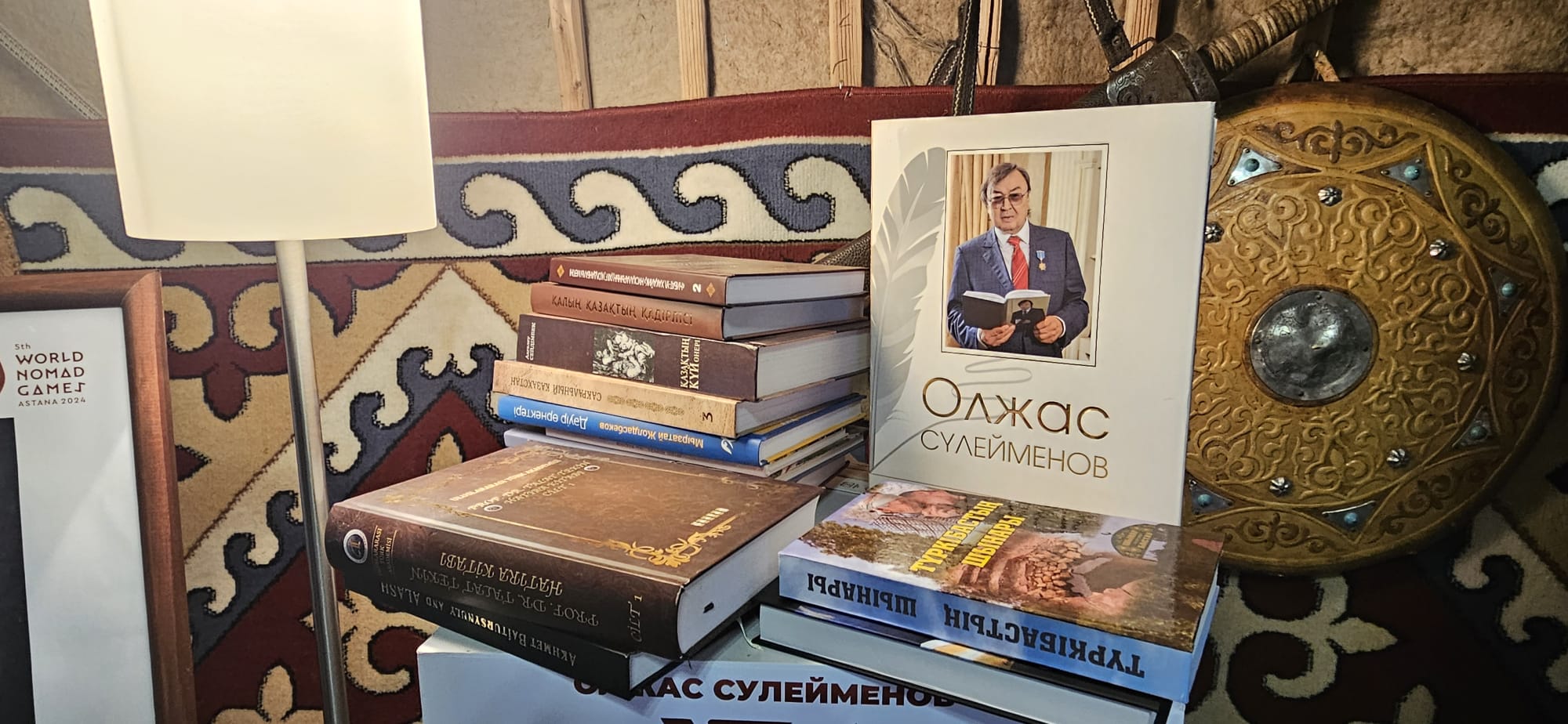
The main heading of the yurt’s pamphlet handout is the substantially worded International Centre for the Rapprochement of Cultures Under the Auspices of UNESCO. In one small yurt (on one Great Steppe), the cultural round-up of folklore, tradition, and heritage sits at an interesting intersection with the Suleimenov-led Nevada-Semipalatinsk movement to shut down the nuclear sites in Nevada and Semipalatinsk Oblast in Kazakhstan, the latter being a hot topic in the AZ i YA yurt. Central Asia’s efforts to reinvigorate nomadic culture in a post-Soviet era, do, however, tally with a line (displayed a the entrance of the yurt) from one of Suleimenov’s poems: “There is no East, There is no West, There is a big word – EARTH!”


